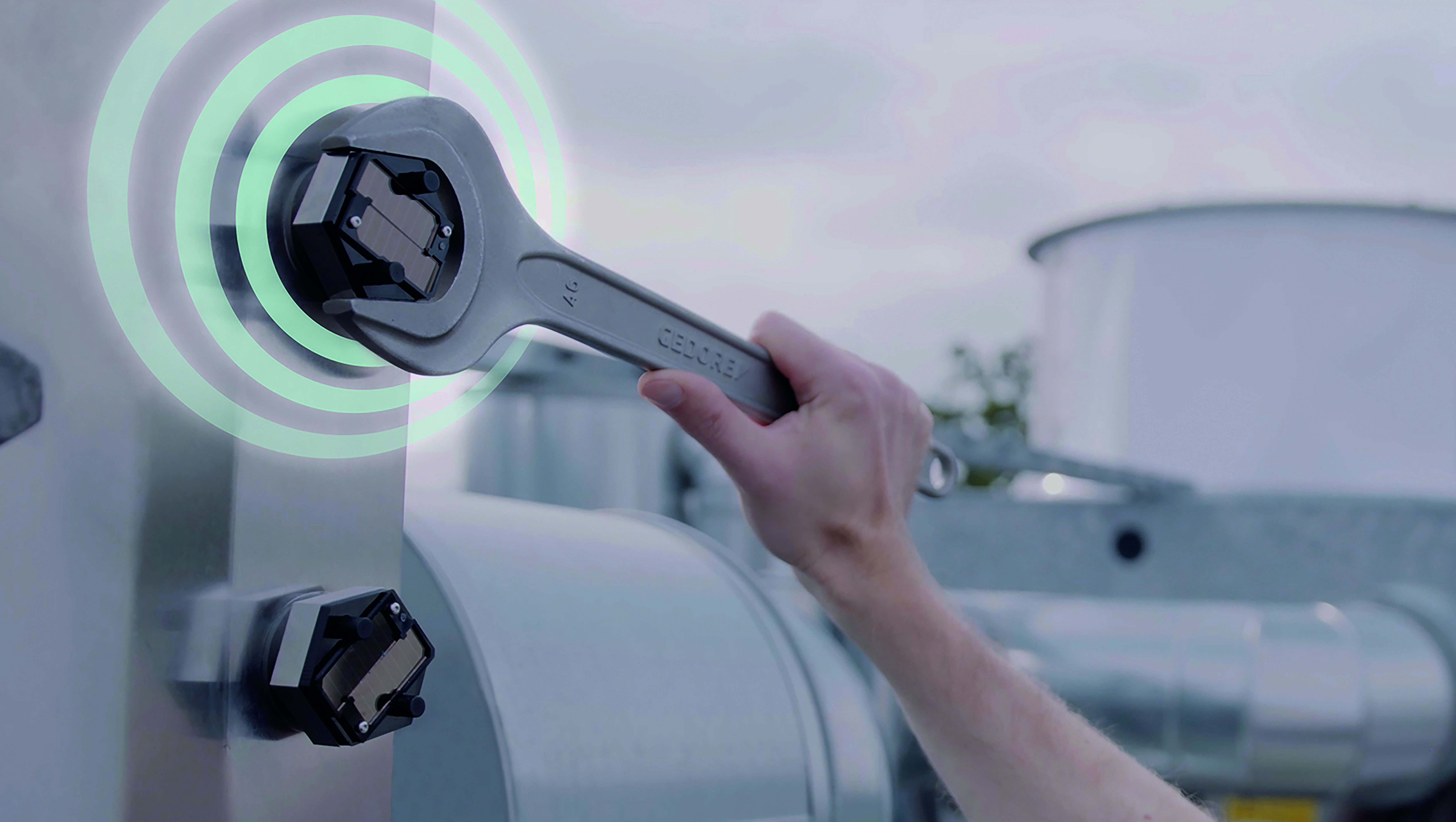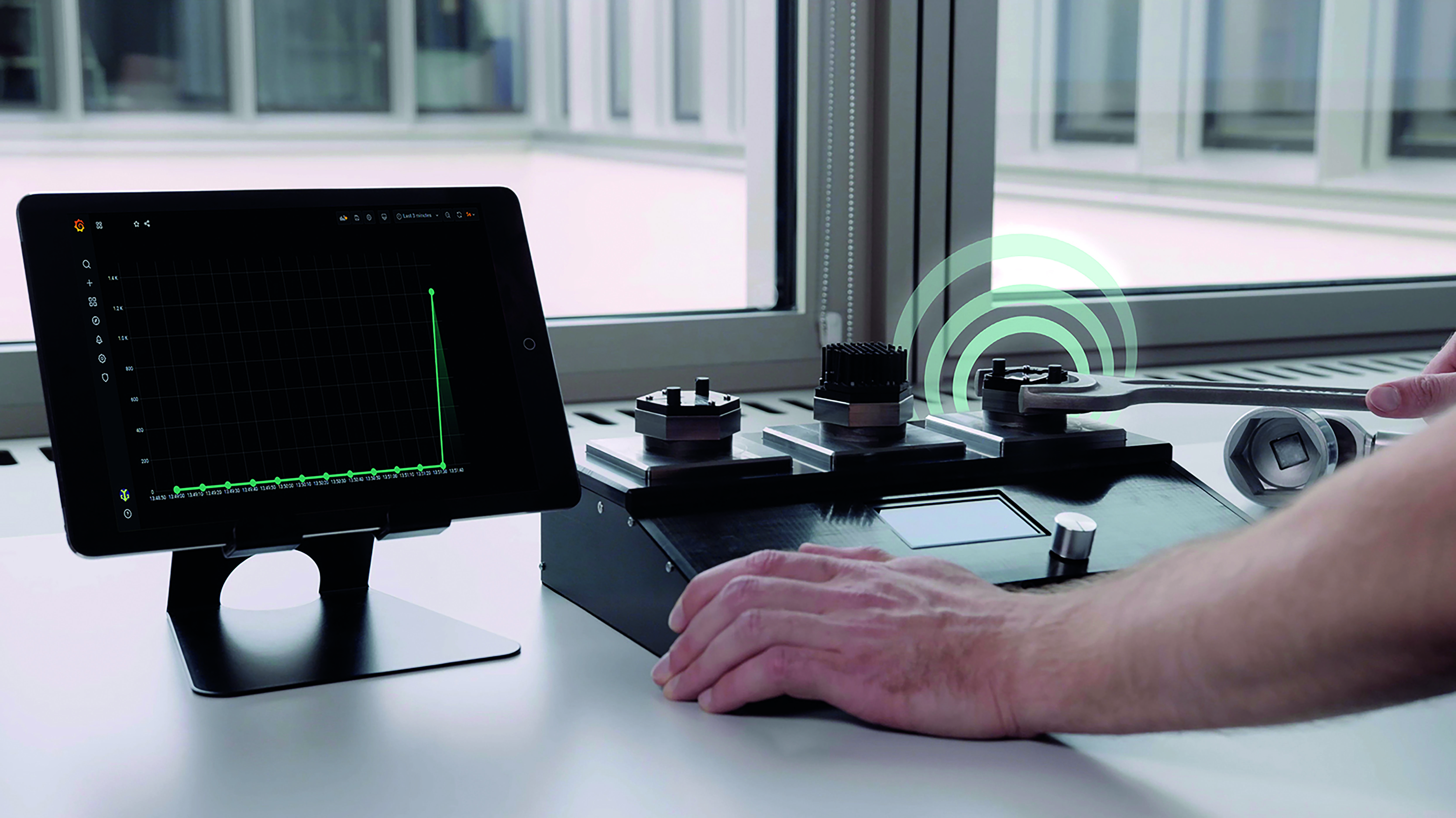Smart Screw Connection – Fraunhofer CCIT presents wireless, self-powered monitoring solution
Nuremberg, Germany: Loose screws at important connection points are a considerable safety risk. The Research Center IoT-COMMs – part of the Fraunhofer Cluster of Excellence Cognitive Internet Technologies CCIT – has developed a smart screw connection that enables wireless, self-powered monitoring. A thin-film sensor measures force effects on the screw connection as well as changes in the ambient temperature at the installation site. The screw regularly transmits load data via the standardized mioty® wireless protocol for monitoring purposes. The aim is to implement a self-powered approach to the permanent long-term monitoring of structures such as bridges, scaffolding and wind power plants. The solution will be presented for at the SPS Connect.


Screws can loosen themselves even if sufficient preload force has been applied. In the case of load-bearing elements that are exposed to strong mechanical or thermal loads, this means safe operation can then no longer be guaranteed. In bridges, scaffolding or fairground rides, for example, the consequences can be fatal. Depending on the application, a drop in the preload force of a screw connection can endanger the operational safety of a whole plant or bring an entire production facility to a standstill. With the smart screw connection developed at the Research Center IoT-COMMs, such a drop would be noticed in time. The smart screw connection permanently monitors even hard-to-reach spots and areas.
Sensor reports loose screws
Using the thin-film sensor system based on the DiaForce® layer developed by the Fraunhofer Institute for Surface Engineering and Thin Films IST, it is possible to determine the tightening force of the screw connection and the temperature at the installation site. The sensor structures register pressure effects and temperature changes because these alter their electrical resistance. A change in pressure signifies that the screw has come loose. Measuring the ambient temperature is important because if it is too high it can affect the sensor data.
Wireless, secure data transmission with mioty®
Using mioty® wireless transmission technology developed by the Fraunhofer Institute for Integrated Circuits IIS, the sensor system regularly transmits readings to a cloud-connected monitoring entity. Thanks to mioty® LPWAN technology, the data can be sent with high transmission security over a range of several kilometers. In addition, before assembly the screws are configured in the FunkeyBox tamper-proof programming unit, developed by the Fraunhofer Institute for Applied and Integrated Security AISEC. Each screw receives its own key, which encrypts their sensor data and thus protects against attacks during transmission to the base station or the backend.
Special plus: Energy harvesting guarantees independent power supply
Thanks to energy harvesting technology developed by Fraunhofer IIS, the screw connection does not require an external power supply. Inside the screw connection is a thermogenerator that generates electrical power from the smallest heating effects at the screw’s connection, which makes sensor operations energy-independent and self-powered. Alternatively, the sensor and transmitter can be powered by a solar cell or battery.
This solution is being developed within the Fraunhofer Research Center IoT-COMMs in collaboration with Fraunhofer IIS, Fraunhofer IST and Fraunhofer AISEC. FIoTCOMMs is part of the Fraunhofer-Gesellschaft’s Cluster Initiative CCIT (Cluster of Excellence Cognitive Internet Technologies).
- Press release as pdf
- Fraunhofer CCIT (cit.fraunhofer.de)
- SPS - information for visitors
- Back to pressroom